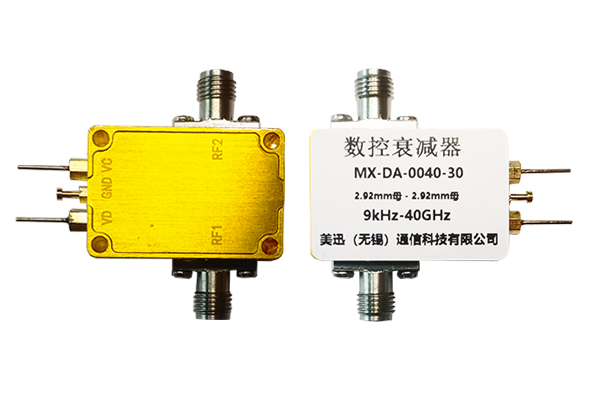
Pin diodes are widely recognized as vital components in RF systems because of their intrinsic functional attributes Their prompt switching characteristics combined with low capacitance and small insertion loss enable efficient use in switching modulation and attenuation scenarios. The primary process that governs PIN diode switching is the modulation of current by varying the applied bias. The bias voltage changes the junction depletion width which in turn influences the device conductance. Controlling the bias point makes it possible for PIN diodes to switch at microwave frequencies with low distortion
When precise timing and control are needed PIN diodes are frequently embedded within advanced circuit configurations They may be applied in RF filtering arrangements to selectively pass or reject particular frequency bands. Their capability to tolerate high-power signals allows deployment in amplifiers power dividers and generator equipment. Smaller, more efficient PIN diodes have expanded their application scope in wireless communications and radar technologies
Study of Coaxial Switch Performance
Creating coaxial switches is a challenging task that demands consideration of a variety of technical parameters Key factors such as switch category operating band and insertion loss shape the coaxial switch performance. An efficient coaxial switch should reduce insertion loss while optimizing isolation between ports
Assessment of switch performance typically measures metrics including return loss insertion loss and isolation. Performance figures are derived from simulation modeling theoretical analysis and empirical testing. Rigorous performance analysis is necessary to secure dependable coaxial switch operation
- Coaxial switch analysis typically employs simulation tools, analytical techniques and experimental procedures
- Thermal effects impedance mismatches and production tolerances are major influences on coaxial switch behavior
- Innovative trends and recent advances in switch design emphasize metric improvements while lowering size and consumption
Optimizing Low Noise Amplifier Architectures
Maximizing LNA performance efficiency and gain is necessary to secure exceptional signal quality in applications It necessitates thoughtful transistor selection bias configuration and circuit topology planning. Sound LNA architectures control noise contributions and support strong low-distortion amplification. Design evaluation relies heavily on simulation and modeling tools to measure noise effects of various choices. The objective is achieving a low Noise Figure which measures the amplifier’s ability to preserve signal strength while suppressing internal noise
- Device choice focusing on minimal intrinsic noise characteristics is paramount
- Adopting proper optimal biasing is essential to reduce noise creation in devices
- The chosen circuit topology plays a major role in determining noise behavior
Implementing matching networks noise reduction strategies and feedback control enhances LNA outcomes
RF Routing Strategies with PIN Diode Switches

PIN diode switching mechanisms deliver versatile and efficient RF path routing across designs These devices switch rapidly enabling active dynamic routing of RF paths. The low insertion loss and high isolation of PIN diodes help maintain signal integrity during switching. Common uses encompass antenna selection duplexers and phased array implementations
A PIN diode switch’s operation depends on modulating its electrical resistance with a control voltage. The deactivated or off state forces a high resistance barrier that blocks RF signals. Forward biasing the diode drops its resistance allowing the RF signal to be conducted
- Moreover furthermore additionally PIN diode switches provide quick switching low energy use and small form factors
Multiple architectures designs and configurations of PIN diode switch networks can be constructed to deliver advanced routing functions. Arranging multiple switches in networked matrices enables flexible routing and dynamic configuration
Measuring the Performance of Coaxial Microwave Switches

Thorough assessment and testing of coaxial microwave switches are necessary to guarantee reliable system operation. Many factors such as insertion reflection transmission loss isolation switching speed and spectrum range govern switch performance. Complete evaluation comprises quantifying these parameters across different operating environmental and test conditions
- Additionally the assessment should examine reliability robustness durability and the ability to endure severe environmental conditions
- Finally the result of robust evaluation gives key valuable essential data for choosing designing and optimizing switches to meet specific requirements
In-depth Review of Noise Suppression in LNA Circuits
LNA circuits play a crucial role in wireless radio frequency and RF systems by boosting weak inputs and restraining internal noise. This review gives a broad examination analysis and overview of methods to lower noise in LNAs. We examine explore and discuss primary noise origins such as thermal shot and flicker noise. We further analyze noise matching feedback topologies and bias optimization strategies to suppress noise. The article highlights recent advances such as novel semiconductor materials and innovative circuit architectures that reduce noise figure. By giving a clear understanding of noise reduction principles and practices this article aims to assist researchers and engineers in developing high performance RF systems
Applications of PIN Diodes for Fast Switching

They show unique remarkable and exceptional characteristics tailored for high speed switching uses Their low capacitance and resistance aid rapid switching speeds to meet demands requiring precise timing control. In addition PIN diodes display linear voltage response that supports precise amplitude modulation and switching performance. Their versatility adaptability and flexibility position them as suitable applicable and appropriate for a wide array of high speed use cases Common applications encompass optical communications microwave circuits and signal processing hardware and devices
Integrated Circuit Solutions for Coaxial Switching
Integrated coaxial switch IC designs improve signal routing processing and handling across electronic systems circuits and devices. These specialty ICs are engineered to control manage and direct signal flow through coaxial cables offering high frequency performance and low latency propagation insertion times. Miniaturization inherent in IC technology yields compact efficient reliable and robust designs suited for dense interfacing integration and connectivity requirements
- By carefully meticulously and rigorously applying these approaches designers can realize LNAs with outstanding noise performance enabling sensitive reliable electronic systems With careful meticulous and rigorous deployment of these approaches developers can accomplish LNAs with outstanding noise performance coaxial switch enabling trustworthy sensitive electronics Through careful meticulous and rigorous application of such methods engineers can design LNAs with top tier noise performance enabling dependable sensitive systems By meticulously carefully and rigorously applying these methods developers can produce LNAs with superior noise performance enabling sensitive reliable electronics
- Use scenarios include telecommunications data communication systems and wireless networks
- Coaxial switch IC implementations support aerospace defense and industrial automation applications
- Consumer electronics audio visual equipment and test and measurement systems are typical domains
Low Noise Amplifier Design for mmWave Systems

Millimeter wave LNA design must address elevated signal attenuation and stronger effects of intrinsic noise. At millimeter wave ranges parasitics dominate so meticulous layout and selection of components is essential. Controlling input match and achieving high power gain are critical essential and important requirements in mmWave LNA design. Choice of active devices such as HEMTs GaAs MESFETs or InP HBTs is crucial to reach low noise figures at mmWave. Moreover additionally moreover the design implementation and optimization of matching networks is vital to ensure efficient power transfer and impedance match. Package-level parasitics should be considered because they may impair LNA function at mmWave. Implementing low-loss transmission lines along with proper ground plane design is essential necessary and important for reducing reflection and ensuring bandwidth
PIN Diode RF Characterization and Modeling Techniques
PIN diodes function as crucial components elements and parts across various RF switching applications. Accurate precise and detailed characterization is critical for designing developing and optimizing reliable high performance circuits using PIN diodes. That entails analyzing evaluating and examining electrical voltage and current characteristics such as resistance impedance and conductance. Characterization also covers frequency response bandwidth tuning capabilities and switching speed latency or response time
Furthermore developing precise models simulations and representations for PIN diodes is crucial essential and vital to forecast performance in complex RF systems. A range of modeling approaches including lumped element distributed element and SPICE models are used. The choice of model simulation or representation hinges on the specific application requirements and the desired required expected accuracy
Sophisticated Advanced Methods for Minimal Noise Amplifiers
LNA engineering calls for careful topology and component selection to meet stringent noise performance goals. Recent semiconductor innovations and emerging technologies facilitate innovative groundbreaking sophisticated design methods that reduce noise significantly.
Representative methods consist of using implementing and utilizing wideband matching networks selecting low-noise transistors with high intrinsic gain and optimizing biasing schemes strategies or approaches. Moreover additionally furthermore sophisticated packaging and thermal control solutions significantly help reduce noise contributions from outside sources. With careful meticulous and rigorous deployment of these approaches developers can accomplish LNAs with outstanding noise performance enabling trustworthy sensitive electronics
